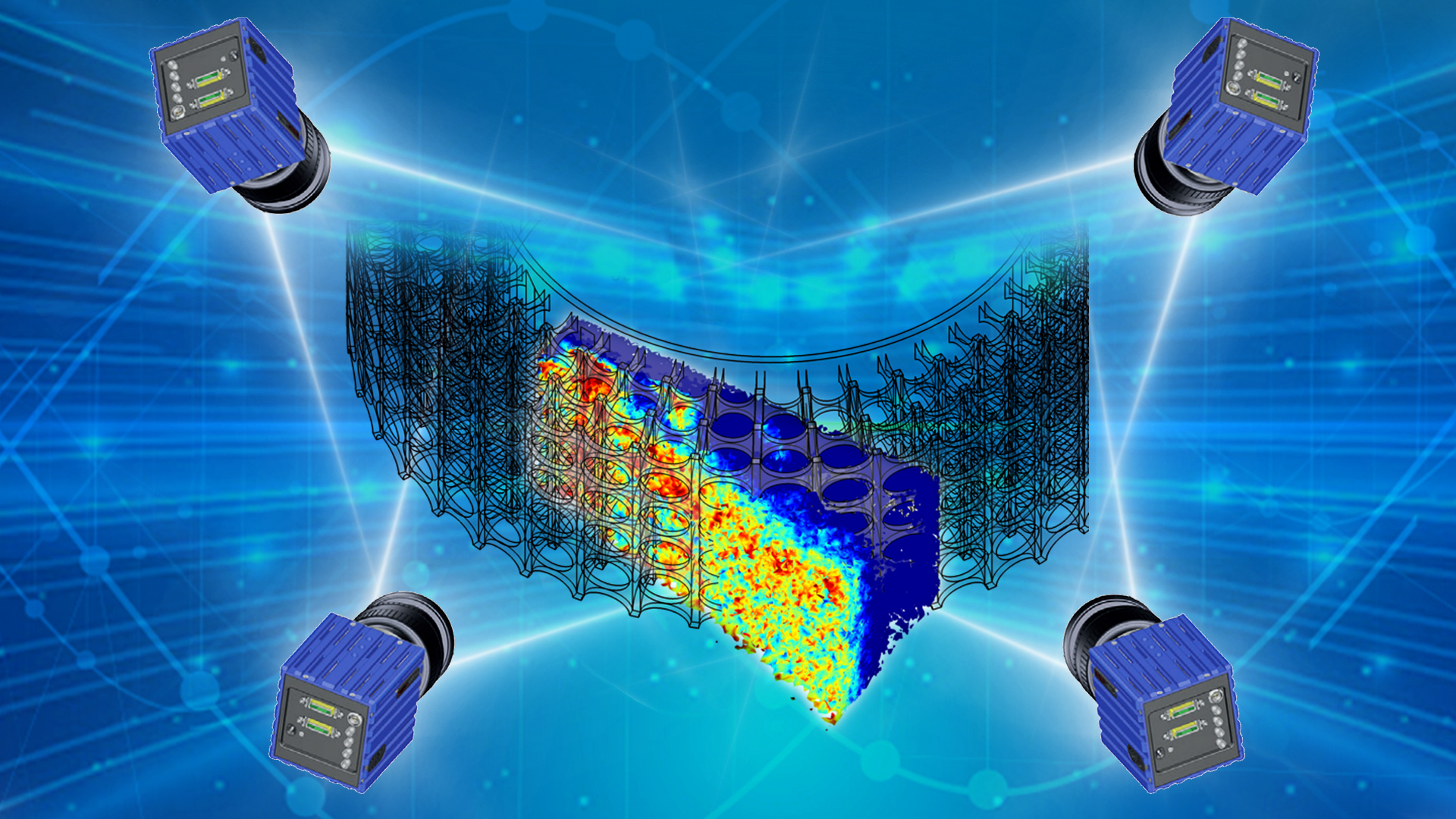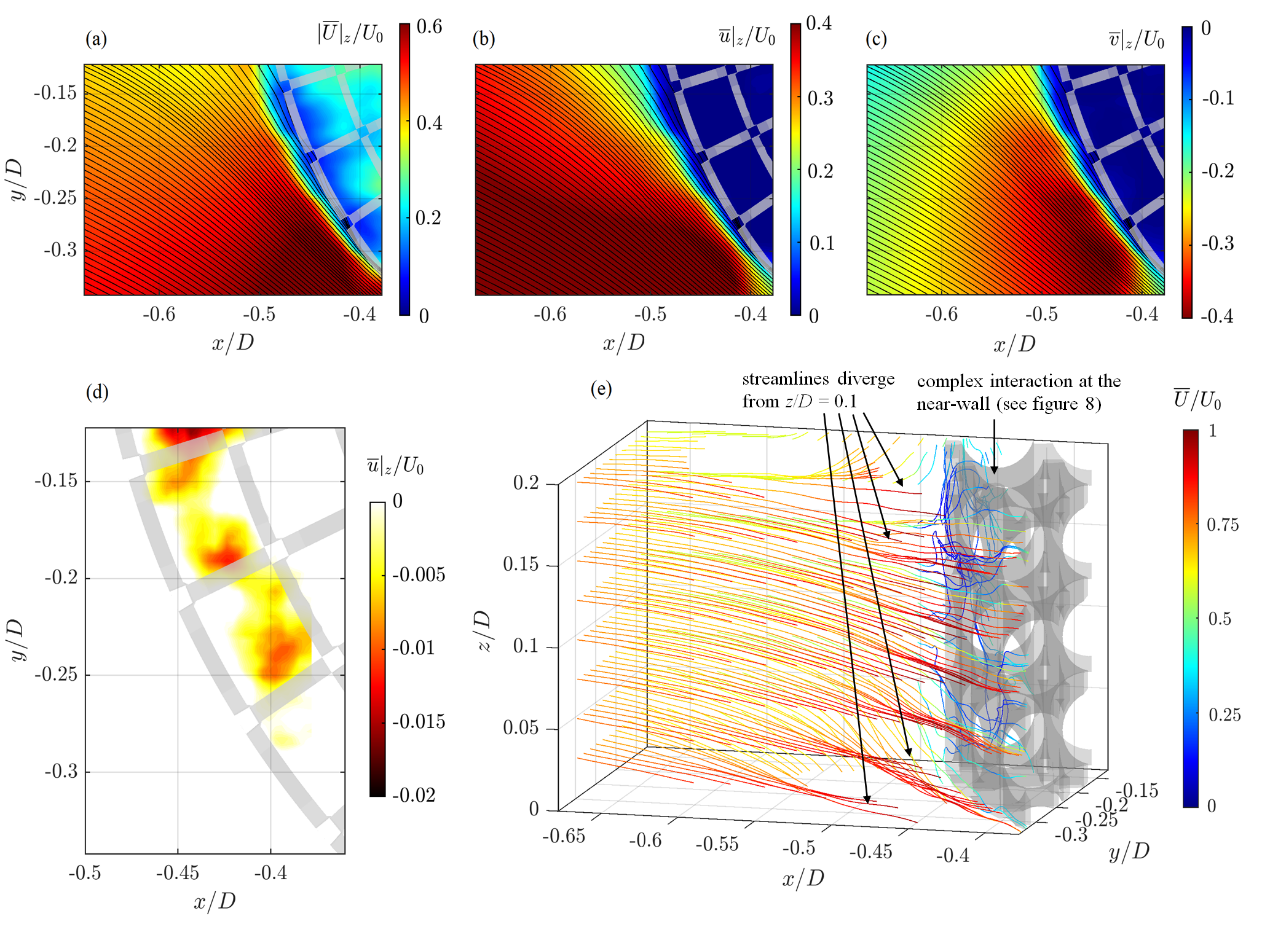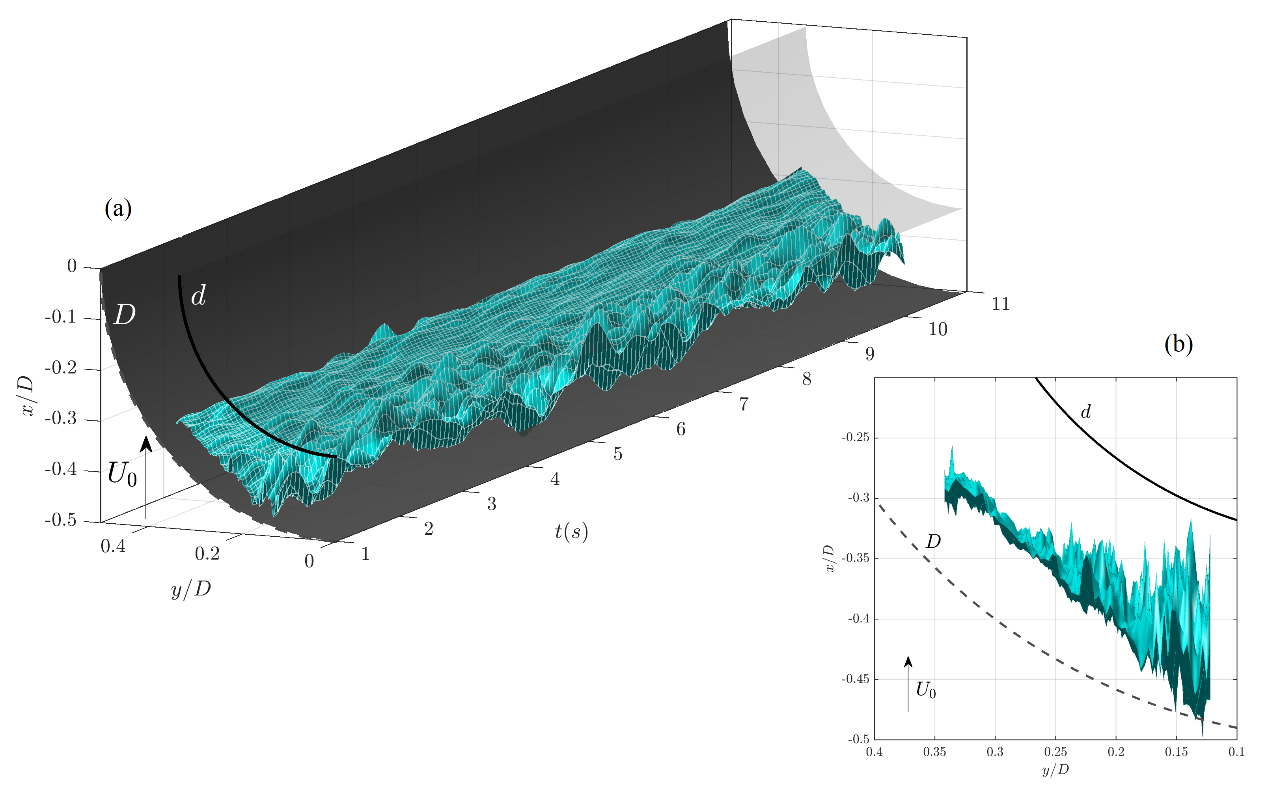The aerodynamic and aeroacoustic characteristics of flow around a cylinder have been the research subject for many years because it represents a large number of flow scenarios in engineering applications, including aircraft landing gear struts, high-speed train pantographs, wind turbine towers, as well as bridges, chimneys, oil pipelines, and many other applications.
Vortex shedding in the wake of a cylinder in uniform flow can be suppressed by applying a porous coating; however, the suppression mechanism is not fully understood. The internal flow field of a porous-coated cylinder can provide a deeper understanding of how the flow within the porous medium affects the wake development. However, the experimental measurement of the internal flow field within porous media is extremely challenging, and no such experiments have been reported so far.

Associate Professor Yu Liu’s research group from the Department of Mechanics and Aerospace Engineering at the Southern University of Science and Technology (SUSTech) has recently made important progress in the study of internal flow field observation and vortex shedding mechanism within porous media.
Their paper, entitled “Internal shear layer and vortex shedding development of a structured porous coated cylinder using tomographic particle image velocimetry”, has been published in the Journal of Fluid Mechanics.
This study measured the internal and near-wall flow fields of a transparent, structured porous coating cylinder (SPCC) through flow visualization and tomographic particle image velocimetry (Tomo-PIV). The experimental observation of the internal shear layer and vortex shedding development of porous media has been achieved for the first time. A correction to the characteristic flow velocity is proposed for the dimensionless vortex shedding frequency, which agrees well with the experimental and numerical results.
In response to the test requirements of the internal flow field of porous media, the researchers proposed an innovative concept of structured porous materials and 3-D printed transparent SPCC. In collaboration with Delft University of Technology in the Netherlands, a series of water tunnel tests using flow visualization and Tomo-PIV at Reynolds numbers of 7000 and 73000, respectively, were carried out in this study. The internal and near-wall flow fields of the SPCC were thoroughly analyzed at the windward and mid-circumference regions.

Figure 1. Time-averaged velocity components in the SPCC windward region: (a) total velocity, (b) streamwise velocity, (c) vertical velocity, (d) streamlines. Flow is from left to right.

Figure 2. Temporal-spatial diagram of the streamwise flow stagnation in the SPCC windward region. Flow is in the positive x direction.

Figure 3. Iso-surfaces of the spectral density of streamwise velocity fluctuations of POD mode n = 2 in the SPCC mid-circumference region evaluated at the vortex shedding frequency. Flow is in the positive x direction.
Flow stagnation is observed in the porous layer on the windward side, and its boundary is shown to fluctuate with time in the outermost porous layer. This stagnation region generates a quasi-aerodynamic body that influences boundary layer development on the SPCC inner diameter, which separates into a shear layer within the porous medium. For the first time via experiment, spectral content within the separated shear layer reveals vortex-shedding processes emanating through single pores at the outer diameter. This provides strong evidence that SPCC vortex shedding originates from the inner diameter. Velocity fluctuations linked to this vortex shedding propagate through the porous layers into the external flow field at a velocity less than the freestream. The Strouhal number linked to this velocity accurately predicts the SPCC vortex shedding frequency.

Figure 4. Schematic diagram identifying key flow features and mechanisms of the SPCC identified from flow visualization and Tomo-PIV.
Research Asst. Prof. Elias Arcondoiulis in Assoc. Prof. Yu Liu’s group is the first author of this paper. Assoc. Prof. Yu Liu is the corresponding author, with SUSTech as the first affiliation. Collaborating institutes include the Delft University of Technology, the University of Bristol, and the University of Adelaide.
This study was supported by the National Natural Science Foundation of China (NSFC).
Apart from the advances in internal flow experiments and vortex shedding mechanism of porous media, Prof. Liu’s group has also produced a series of original works recently on flow field numerical simulation, near-wall and far-field pressure measurements, and optimization of drag and noise reduction for SPCC, which have been published in the Journal of Sound and Vibration, Physics of Fluids, and Aerospace Science and Technology.
Paper link: https://doi.org/10.1017/jfm.2023.473
To read all stories about SUSTech science, subscribe to the monthly SUSTech Newsletter.
Proofread ByAdrian Cremin, Yingying XIA
Photo By